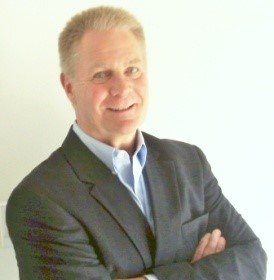Richard Haynes is the owner of Total Joint Fitness, LLC. providing services to patients as an online personal trainer and physical therapy rehabilitation specialist. Total Joint Fitness was developed to help seniors with developing a healthier lifestyle through physical rehabilitation and physical fitness.
Richard has over 20 years of experience doing physical therapy in the home health sector in Bradenton, Florida. He’s also a certified personal trainer for adults with the American Council on Exercise since June 2000. He placed fourth in the ESPN Over 50 Natural Bodybuilding Championship in Miami Beach in 2010.
Phil Faris: This is a topic that I thought I’d never been interested in talking about but, earlier this year, I’d experienced some knee pain and went to an orthopedic doctor. He showed me my x-rays, and I had almost no cartilage in my left knee. He said if the pain level was fine now, there was no need to do anything. However, once the pain became an issue, the only way that he could help me would be with a total knee replacement. So, I know I have an appointment in the future for a total knee replacement. Hopefully, that’s far in the future, because I can manage and mitigate the pain issues with physical therapy and strength training.
To help people fully appreciate your unique perspective and background, can you share a little bit about your journey of rehabilitation and fitness and how you chose to work with clients with a total knee replacement?
Richard Haynes: Phil, the story goes back to 1973, so I’ll give you and the audience sort of a Reader’s Digest version of this. I was involved in a serious motorcycle accident one evening, and it laid me up in the hospital for many months. I had almost lost my right leg, and I had multiple surgeries on it, multiple fractures. That was the beginning of my fitness and physical therapy journey. I was bedbound from February all the way until October of 1973, and then in a body cast. Once I could get out, I had to do my own physical rehabilitation. I was a 16-year-old fellow and didn’t know much about physical therapy or medicine, but this is where my understanding of medicine and, especially, orthopedics started. I loved bones, the skeleton, after this because I’d been around doctors so much and hearing them talk the lingo, and I became very excited about it, so I began to do my own physical rehabilitation.
Years later, I really didn’t break into the physical therapy field until 1995. I made a mid-career change and decided I was going to do what I really wanted to do, and this is how I got into physical therapy. I had that passion for medicine and fitness, and this is where I began.
Then, around 1995 after I graduated from Physical Therapy school a couple of years later, I had begun to experience severe pain in my right knee, the same leg that was injured. You can visualize this. My right leg was wearing down. The body parts on that side were wearing faster than on my left. In other words, it’s like the front tire of a car being out of alignment, and maybe the inside of that tread is going to wear. When you have a knee that goes bad, it’s that medial compartment, or the inside of your knee, that wears first anyway, and I had to get a total joint replacement because I was bone-on-bone.
From that point on, once I went through that and did my rehabilitation and brought my fitness back up, this is where I began to get concerned and excited about working with total joint replacements, patients in the future since I’d been through it and done it.
Phil Faris: You focus on the older adults who have total knee replacements, and that population is rapidly growing. Why is it that?
Richard Haynes: There’s a couple of reasons for that. First, we’re all aging. The country is getting older. Many of us are getting into our 60s and 70s, and the wear and tear of just living long are beginning to wear on our bodies, and especially the knees. On top of that, we’re more active. We Baby Boomers are probably more active than our parents, and our grandparents were, so you start to develop hip/knee problems quite often with this type of activity level.
Then, on top of that, the fact you have a larger obesity rate in this country, as well; being obese or overweight does not bode well for your knees as you age. So, it’s a combination of the older generation, the Baby Boomers, hitting the medical system all at once and the fact that we’ve just gotten larger as a society. The knees are one of the first joints to go. Therefore, you see this large rise. You read and hear about that there are approximately 600,000 knee replacements a year. They’re forecasting by maybe 2020 that there could be close to a million a year. It’s a never-ending problem, but I believe a lot of it must be society just getting older in general.
Phil Faris: Let’s spend some time talking about the patients that you do work with. What are some of the biggest challenges your patients face when they’re trying to come back from total knee surgery?

